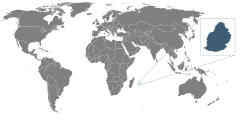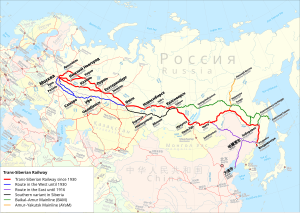User:Abramius/sandbox
| Trans-Sahelian Railway | |||
|---|---|---|---|
 | |||
| Overview | |||
| Other name(s) | Chemin de fer transsahélien | ||
| Termini |
| ||
| Service | |||
| Type | Heavy Rail | ||
| History | |||
| Commenced | 1894 | ||
| Completed | 1927 | ||
| Technical | |||
| Line length | 7,422 km (4,612 mi) | ||
| Track gauge | Sophia Gauge (1,588 mm) | ||
| |||
Trans-Sahelian Railway | |||||||||||||||||||||||||||||||||||||||||||||||||||||||||||||||||||||||||||||||||||||||||||||||||||||||||||||||||||||||||||||||||||||||||||||||||||||||||||||||||||||||||||||||||||||||||||||||||||||||||||||||||||||||||||||||||||||||||||||||||||||||||||||||||||||||||||||||||||||||||||||||||||||||||||||||||||||
|---|---|---|---|---|---|---|---|---|---|---|---|---|---|---|---|---|---|---|---|---|---|---|---|---|---|---|---|---|---|---|---|---|---|---|---|---|---|---|---|---|---|---|---|---|---|---|---|---|---|---|---|---|---|---|---|---|---|---|---|---|---|---|---|---|---|---|---|---|---|---|---|---|---|---|---|---|---|---|---|---|---|---|---|---|---|---|---|---|---|---|---|---|---|---|---|---|---|---|---|---|---|---|---|---|---|---|---|---|---|---|---|---|---|---|---|---|---|---|---|---|---|---|---|---|---|---|---|---|---|---|---|---|---|---|---|---|---|---|---|---|---|---|---|---|---|---|---|---|---|---|---|---|---|---|---|---|---|---|---|---|---|---|---|---|---|---|---|---|---|---|---|---|---|---|---|---|---|---|---|---|---|---|---|---|---|---|---|---|---|---|---|---|---|---|---|---|---|---|---|---|---|---|---|---|---|---|---|---|---|---|---|---|---|---|---|---|---|---|---|---|---|---|---|---|---|---|---|---|---|---|---|---|---|---|---|---|---|---|---|---|---|---|---|---|---|---|---|---|---|---|---|---|---|---|---|---|---|---|---|---|---|---|---|---|---|---|---|---|---|---|---|---|---|---|---|---|---|---|---|---|---|---|---|---|---|---|---|---|---|---|---|---|---|---|---|---|---|---|---|---|---|---|---|---|---|---|---|---|---|
| |||||||||||||||||||||||||||||||||||||||||||||||||||||||||||||||||||||||||||||||||||||||||||||||||||||||||||||||||||||||||||||||||||||||||||||||||||||||||||||||||||||||||||||||||||||||||||||||||||||||||||||||||||||||||||||||||||||||||||||||||||||||||||||||||||||||||||||||||||||||||||||||||||||||||||||||||||||
| Dodo Temporal range: Holocene
| |
|---|---|

| |
| Dodo skeleton cast and model based on modern research, at Oxford University Museum of Natural History | |
| Scientific classification | |
| Domain: | Eukaryota |
| Kingdom: | Animalia |
| Phylum: | Chordata |
| Class: | Aves |
| Order: | Columbiformes |
| Family: | Columbidae |
| Subfamily: | Raphinae |
| Genus: | †Raphus Brisson, 1760 |
| Species: | †R. cucullatus
|
| Binomial name | |
| †Raphus cucullatus (Linnaeus, 1758)
| |

| |
| Location of Mauritius (in blue) | |
| Synonyms | |
| |
The dodo (Raphus cucullatus) is an extinct flightless bird that was endemic to the island of Mauritius, east of Madagascar in the Indian Ocean. The dodo's closest genetic relative was the also-extinct Rodrigues solitaire, the two forming the subfamily Raphinae of the family of pigeons and doves. The closest living relative of the dodo is the Nicobar pigeon. A white dodo was once thought to have existed on the nearby island of Réunion, but this is now thought to have been confusion based on the Réunion ibis and paintings of white dodos.
Subfossil remains show the dodo was about 1 metre (3 ft 3 in) tall and may have weighed 10.6–17.5 kg (23–39 lb) in the wild. The dodo's appearance in life is evidenced only by drawings, paintings, and written accounts from the 17th century. As these vary considerably, and only some of the illustrations are known to have been drawn from live specimens, its exact appearance in life remains unresolved, and little is known about its behaviour. Though the dodo has historically been considered fat and clumsy, it is now thought to have been well-adapted for its ecosystem. It has been depicted with brownish-grey plumage, yellow feet, a tuft of tail feathers, a grey, naked head, and a black, yellow, and green beak. It used gizzard stones to help digest its food, which is thought to have included fruits, and its main habitat is believed to have been the woods in the drier coastal areas of Mauritius. One account states its clutch consisted of a single egg. It is presumed that the dodo became flightless because of the ready availability of abundant food sources and a relative absence of predators on Mauritius.
The first recorded mention of the dodo was by Dutch sailors in 1598. In the following years, the bird was hunted by sailors and invasive species, while its habitat was being destroyed. The last widely accepted sighting of a dodo was in 1662. Its extinction was not immediately noticed, and some considered it to be a mythical creature. In the 19th century, research was conducted on a small quantity of remains of four specimens that had been brought to Europe in the early 17th century. Among these is a dried head, the only soft tissue of the dodo that remains today. Since then, a large amount of subfossil material has been collected on Mauritius, mostly from the Mare aux Songes swamp. The extinction of the dodo within less than a century of its discovery called attention to the previously unrecognised problem of human involvement in the disappearance of entire species. The dodo achieved widespread recognition from its role in the story of Alice's Adventures in Wonderland, and it has since become a fixture in popular culture, often as a symbol of extinction and obsolescence.
| ||
Informative Referendum to Express the Aspirations of the Colonial Subjects of France | ||
 French Indochina Before the Referedum | ||
| Voting system | Registered Households | |
|---|---|---|
| Website | French Royal Archives | |
| Colonial Status of Tonkin | ||
| Colonial Status of Annan | ||
| Colonial Status of Cochinchina | ||
| Colonial Status of Cambodia | ||
 French Indochina After the Referedum | ||
 Some other Data | ||
| ||
 French Indochina Before the Referedum | ||
| Website | French Royal Archives | |
|---|---|---|
| Colonial Status of Hainan-Leizhou | ||
| Colonial Status of Kwang-Si | ||
| Colonial Status of Laos | ||
| Colonial Status of French Siam | ||
 French Indochina After the Referedum | ||
 Some other Data | ||


